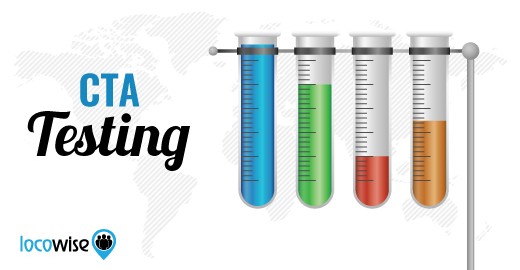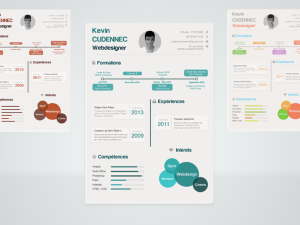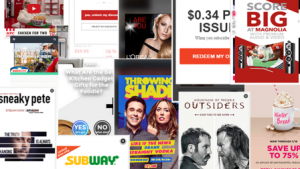Remember when calls-to-action on social media used to be so incredibly spammy that they turned buyers off everywhere? You couldn’t move for CTAs that were loud, in your face and generally extremely pushy. Enough so to make people think that they would steer clear of that brand. Thank you very much.
Well, they’re kind of back. We all know that a good CTA can mean the difference between a sale and your offer seeming as welcome as cold porridge, but too many brands are using CTAs as if they were confetti. And confetti doesn’t sell. It just gets messy.
Best to think of a more positive, intelligent way of using CTAs. Making them part of a wider marketing strategy. Contextual too so your audience is being spoken to from a perfectly natural place. This sounds like common sense, but doing it really makes for a much more effective use of the CTA. It helps you get more conversions.

Some real, genuine beginner’s advice
To truly get to know your customers and be able to offer them an incredible CTA at some point in the future, you need to actually talk to them. This means thinking about having a conversation with them. A real life talk. If you do business in the real world this is quite easy to organise. It simply involves you taking the time to discuss products and the customer experience with the customers that walk through the door. This can be done through surveys (as old-fashioned as it may seem) or questions on receipts. The answers you receive can lead to many excellent opportunities as you come to learn what it is your audience actually wants.
If you are online you can run online polls that directly speak to customers and effectively gather information about their wants and needs. By doing this you are basically putting the CTA together. You are finding out what your customers want. You can also use other avenues, such as Facebook Messenger, to really get a chance to talk to your customers and solve their problems. All of this helps you appear more like a company that genuinely wants to help and can help with problems. And all the while you’re picking up valuable info that will allow you to put together a strong CTA that really speaks to their needs.
It’s important to try and have a real conversation in this case. If you don’t you won’t really get to the root of the problems they are facing (and which your product will be able to solve). Use the time you have in front of customers to work on finding out what kind of stuff will bring in clicks in CTA scenarios. Research is key.
This fundamental, basic approach should form the bedrock of all your activities around the creation of any CTAs. It will allow you to become an expert in knowing what to say and how to say it. It will ensure that you’re always attuned to the needs of your audience. You’ll be able to craft CTAs that genuinely pushes them along a road that will lead to their problem being solved. It’s not rocket science, but not enough brands do it.
Don’t be shy to ask for the deal
Now you know about the idea of starting a conversation and getting to know your customers and what they need. You now need to think about how to present this in a CTA.
Your first big aim is to be absolutely clear in any call to action. There is absolutely no mileage in being fuzzy or vague, or even hesitant. Selling is all about clarity and it always has been. The salesperson who doesn’t ask for the deal is the one that doesn’t get the deal.
The worst-case scenario is assuming that your audience knows what you want them to do. This is CTA suicide. It only helps to make you seem unsure as a brand. Always be 100% clear when you request your audience to do anything in a CTA. This is an important aspect of making your CTA effective.
If you want them to click you need to say ‘click now’ to get the maximum impact. If you want them to purchase, ask them to purchase. Don’t be shy to ask for the deal.
Book in for a free Winter Health Check, and take good care this winter: https://t.co/C4hK1vDsFvhttps://t.co/pdfLMPmDj7
— Mercedes-Benz UK (@MercedesBenzUK) December 17, 2015
Use imagery to create an emotional impact
Images can be the killer difference between a CTA that works and one that simply fizzles out. A bright colourful image catches the attention and brings the audience closer to the CTA itself. This allows you to first grab attention and then back up your message accordingly. It’s powerful stuff. It needs to be a part of what you do when you are crafting effective CTAs.
A good piece of imagery can be a hyper-effective sales tool. Whatever your audience is in need of you can present it in your imagery. This is best exemplified by the kind of companies that can present the immediate and attractive solution to their customer problem. A good example is this one from The Ritz hotel:
https://twitter.com/theritzlondon/status/675006174434054145
Perfectly capturing exactly what the audience wants while presenting it in a high quality image. It needs nothing other than the picture itself to instantly succeed. It hits the audience with a clear and effective CTA.
You can pair an image with a very simple and effective CTA. Focus on making the image convey the bulk of the emotional message. Let the image tell the story that the CTA adds to. Getting the audience hooked and then landing them with a CTA is an ancient marketing trick, but Oreo seems to have got it perfected here:
https://www.facebook.com/oreo/photos/a.124804629652
Don’t have leftover Turkey sandwiches on Boxing Day! Book dinner in The Ritz Restaurant. https://t.co/OEE4ISAoi7 pic.twitter.com/LKrAwSHVhc
— The Ritz London (@theritzlondon) December 10, 2015
Know where your audience is at
If your customers are not ready to buy just yet (and you will only know this if you are aware of what part of the sales funnel they are in) then simply offer them information with a non-aggressive CTA. A non-aggressive CTA is a few words asking them to find out more.
You need to know where your customers are at as potential buyers. This helps you craft an effective CTA that doesn’t blow them out of the water. This is an easy and quick way to prevent the situation where you turn half your customers off by coming across as hyper-aggressive and pushy.
Make it urgent
This is a crucial one. CTAs only ever work well if they have some kind of urgency to them. It’s your job to get that urgency across without sounding like a used car salesman. This can be done. It simply involves thinking about a sensible way to ensure that people will see your offer and feel it’s compelling. You need to know why someone would click. What would get them hungry to click?
If a discount of 10% is going to rock their world you should make that a key part of your CTA. It becomes urgent if you say they’ll only get that 10% discount if they apply today. If you can offer them exclusive membership to a club of some kind, give this a time element too and you can expect the take-up to be considerable (as long as your club is really attractive and not just a ruse).

You get the picture. Make your CTAs contain some kind of urgency and you can be sure that the results will be powerful.
Keep the choices to a minimum (just one)
If you give your audience more than one choice then they are going to deliberate. And deliberation on social media costs a lot of money. Give them just one simple clear choice to make. If it’s compelling they will rush to it and make that choice.
By offering them a couple of choices, such as a couple of dates to sign up for on a webinar for example, or even two price points, you are simply setting up doubt in their minds. They don’t have time for this. They want a simple and quick decision and they want you to help them make it.
Make it up front
Many brands have a blog. It’s just part of what they do. Some brands have a CTA on their blog in the wrong place. The CTA can only be found by scrolling down the page. Or it’s amongst a bunch of other ads. This is not good marketing. It will simply result in you having a situation where people will be too confused to act.
Counter this by ensuring that the CTA is way up high on the page of the blog. Easy to see and easy to act upon. Your audience needs a very clear-cut experience. If your offer is too good to miss then why should they miss it?
Test as much as you can
This is a very simple concept that is often overlooked by brands, especially those that are just trying to get stuff out there as quickly as possible without worrying too much about presentation. You have the option of testing your CTA to the hilt. There is a lot of value to be had here with that testing.
There are various elements you can test. In social media you should be looking at engagement metrics as a key way of getting the information about your campaign. It can help you succeed. You can test whether:
● Taking an image out makes a difference to clicks and engagement
● Adding a more urgent CTA makes a difference
● Including a link thumbnail or simply adding the URL in your copy
Using a testing mentality allows you to get on top of problems much quicker. You need to road test your CTA content rigorously.

And while we’re on the subject…
Know your metrics. It doesn’t pay to ignore metrics. With so much data out there right now, you’d be silly to avoid them. Metrics give you the information on what CTAs are working and where. There are a number of metrics (or clues) that you can pick up on, but we’ll go through the most important ones here.
Look for information on:
- Reach and impressions: This is the number of people who saw the CTA. Pure and simple. It shows how much reach and exposure your campaign is getting.
- Click-throughs: These are where people take action with your CTA and actually click on the link. Knowing how many of these you get for your campaign is obviously vital stuff.
- Conversions: The number of people who complete your form (or other CTA) after seeing it on your landing page.
Use the data. Information will always be power. Having access to metrics and the data they provide means that you have power in the world of CTAs.
Digital & Social Articles on Business 2 Community(61)








